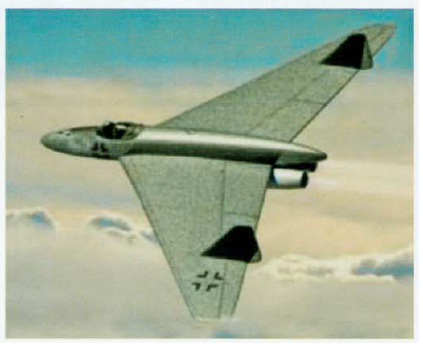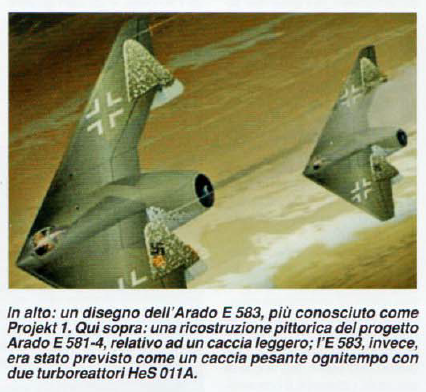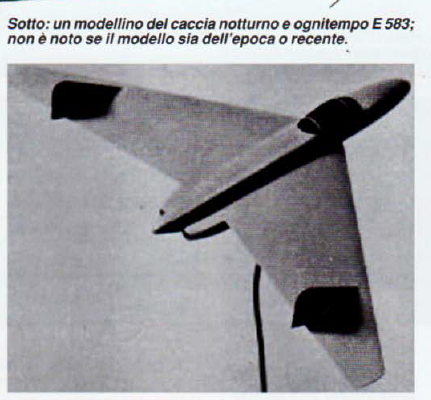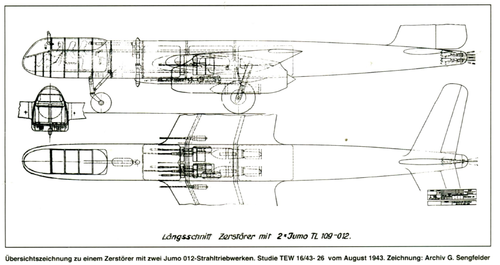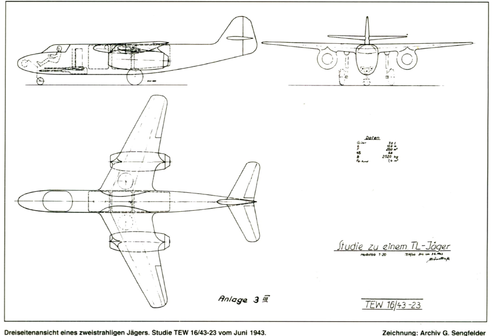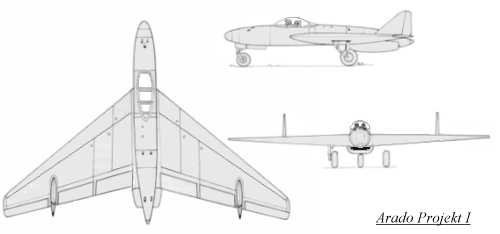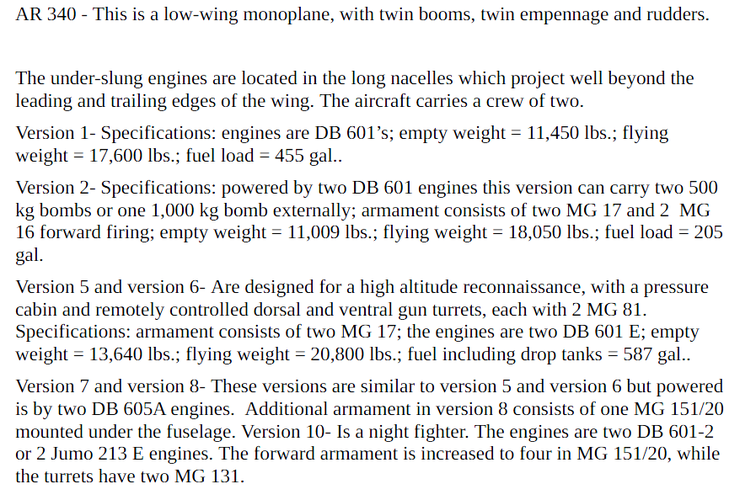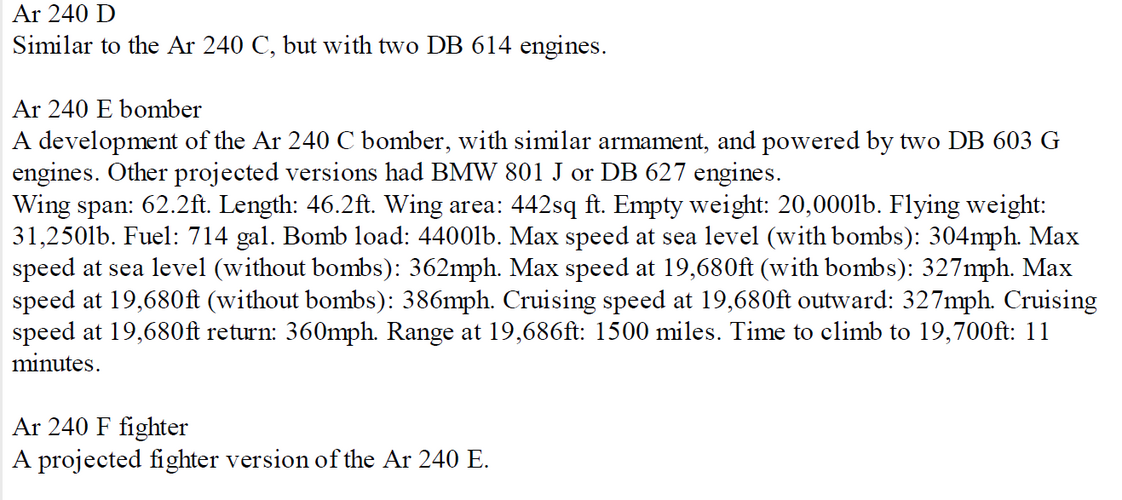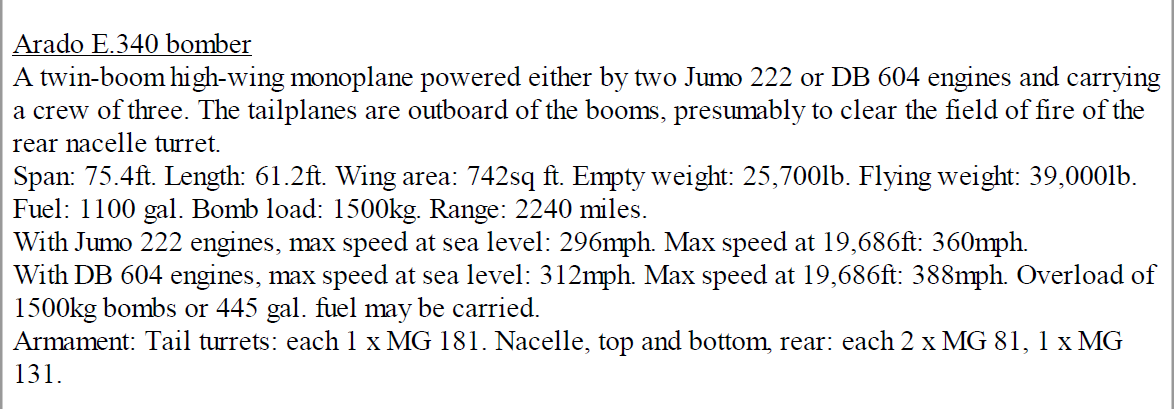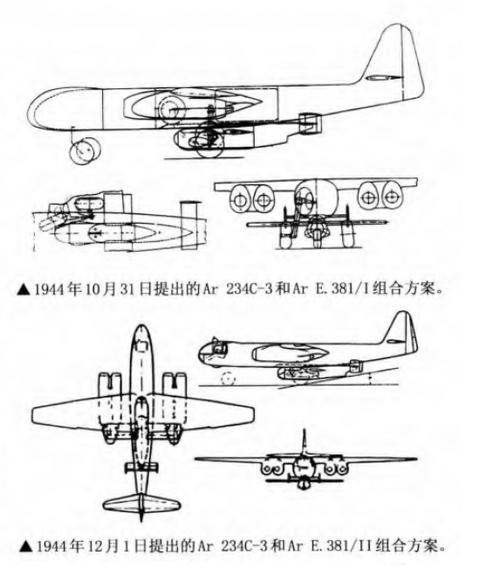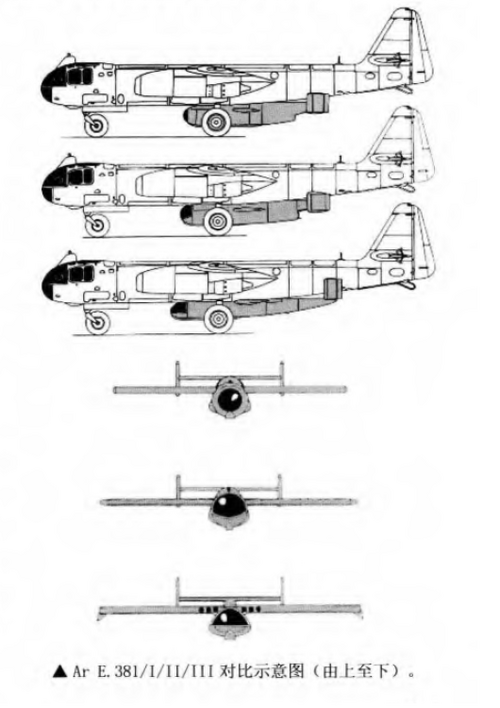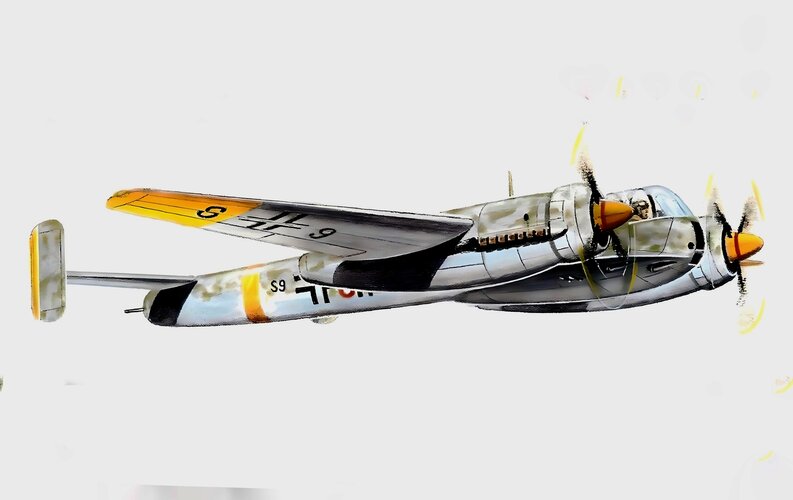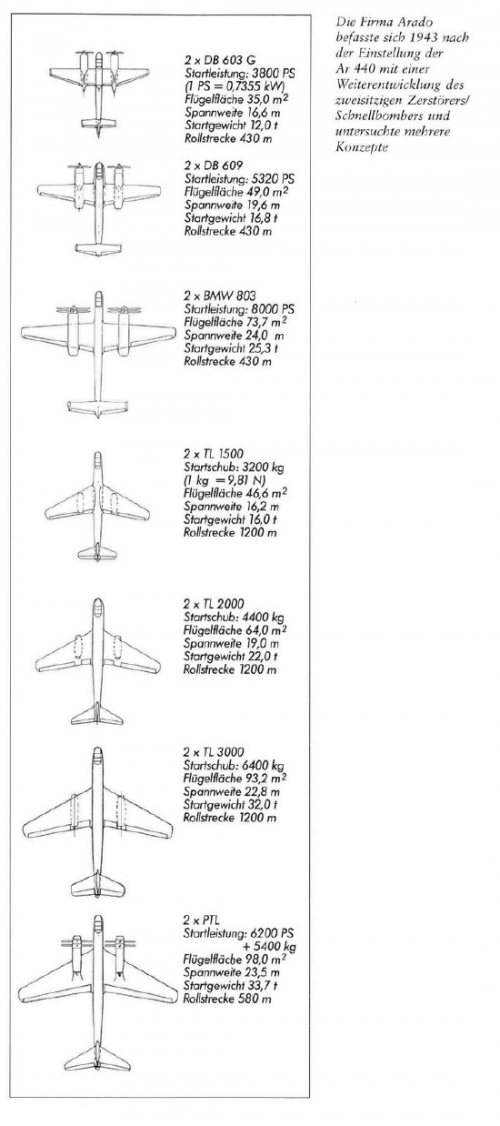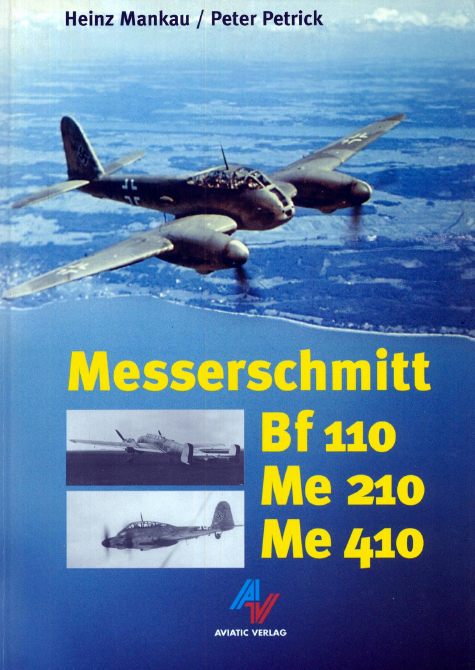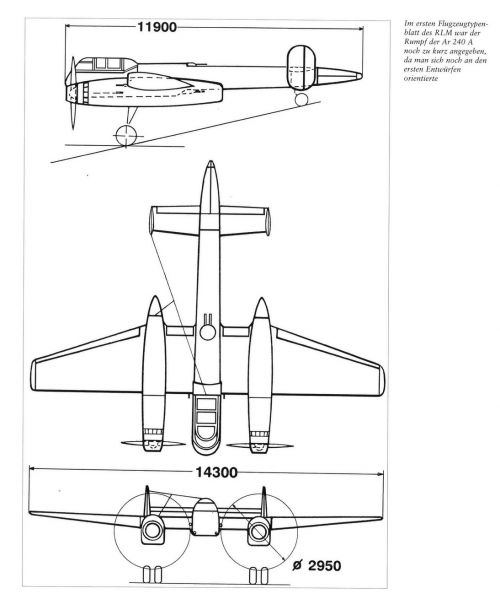From Flugzeug Classic 2009/6.
Was the Ar 440 a variant of the Ar 240 C? Sort of. Contrary to what you might have read elsewhere, it would appear that the main difference between the Ar 240 A, B, C and D was the engine each was fitted with. All of them were multirole - so any given Ar 240 could be used as a fighter, a bomber or for reconnaissance.
The Ar 240 A and B were designed for the DB 601 E and DB 605 respectively. Each had a wingspan of 14.3m but while the Ar 240 A was 12.8m long, the Ar 240 B was 12.98m long.
The Ar 240 C and D were designed for the DB 603 and DB 614 respectively. Each of these had a wingspan of 16.6m and while the Ar 240 C was 13.45m long, the Ar 240 D was only 13.27m long.
These stats come from a pair of Arado description reports, one outlining the A and B, the other the C and D. Both reports are dated November 6, 1941.
The Ar 440 was intended to have DB 603 G engines initially, with the DB 627 being installed later. It had a 16.6m wingspan like the Ar 240 C and D but it was 14.39m long, making it the longest known variant of the 240 family. It also had a redesigned cockpit and, I think, a redesigned periscope system.
Given that its wings were the same as those of the C (and D) and that it had the same engine as the 'C', you could argue that it was a less a 'variant' of the Ar 240 C than a development of it. The Ar 440 description report I have is from October 13, 1942 - so just over 11 months later than the reports detailing the A, B, C and D.
Incidentally, unlike all the other designs, the Ar 240 E was a dedicated bomber based on the Ar 240 C, including DB 603 G engines. Its main distinguishing features were a wingspan of 19m(!) and a tail span of 6m - about 20cm (I think) wider than that of the Ar 240 C. The Ar 240 E description report is dated March 19, 1942.

